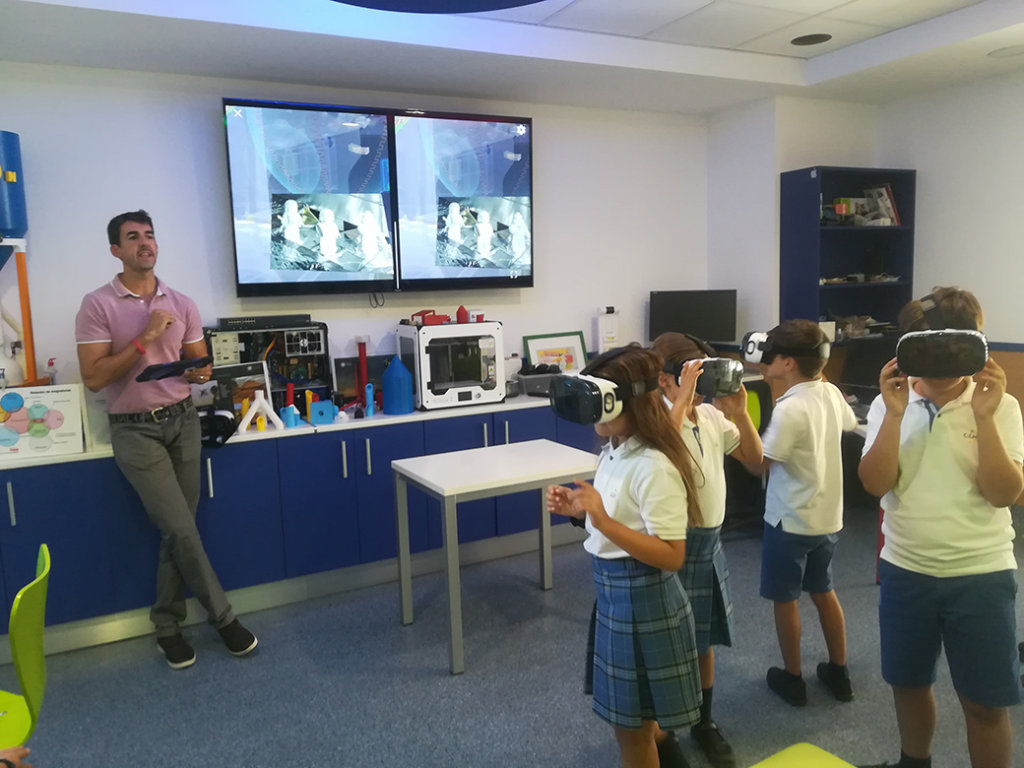By Jorge Calvo, Head of Technology and Education at Colegio Europeo de Madrid
When I considered writing this article and telling my experience, I had to start somewhere, and what better than stopping to explain the difference between “technology” and “educational technology”. It is vital that both schools and teachers know the differences before implementing it in the classroom, so let’s start with the basics.
When does technology become “educational”?
I am convinced that technology becomes educational when it passes through the hands of a teacher who, after putting it into the classroom, has achieved motivation, work, innovation and above all learning by his students.
Technology makes us more transversal and cross the walls of our classrooms with attractive and realizable projects, where students feel part of something that at some point will become real, that they can “touch”.
Can you study mathematics by creating an intelligent drum for a country in need of water? And study physics by creating a mill to power remote areas? I am convinced you can.
I always say that the most innovative technology is not the one that guarantees us to give a good class, or that our students learn. Sometimes, the simplest resource is the one that can perfectly project our idea in the classroom.
Technology shows us availability and immediacy… but it can also show us surprise, novelty, innovation or vision. These factors, together with those we already have, help us create new lines of learning.
Can you create a hand prosthetic using 3D printing as an educational project?
It is no longer just motivation, it is emotion. When you do something for someone you feel good about, and when you feel good about yourself, you want to contribute ideas to achieve something better. And honestly, this is what I see in all my students.
In addition, we not only value the final goal of the project but the path we travel until we reach it. How interesting is the area of a cylinder when you have to fill a drum with water and how big you feel when with two magnets, a little copper and the wind, you are able to give light to a town!
One of the most rewarding experiences for me, borne in the classroom, was when my elementary students assembled 3D-printed pieces to make a hand prosthetic for a classmate.
Along this path, not only knowledge was generated, but also fundamental values such as camaraderie, solidarity and empathy.
It is no longer just motivation, it is emotion. When you do something for someone you feel good about, and when you feel good about yourself, you want to contribute ideas to achieve something better.
They are projects that are born of a student who thinks that with the resources he has and his ideas, he can change anything. And that is our mission as teachers: we must guide them on that path. We have realized that although we are not the only source of knowledge in the classroom, we are the guide, the only one capable of filtering the large amount of information that comes to them.
So, how do you get the best out of technology?
We must be clear that technology by itself does not generate learning, however spectacular it may be in the classroom.
In my opinion, I think it’s as simple as changing the focus. It is fundamental that technology adapts to our needs in the classroom and work methodology, never the other way around.
Educational technology is not as far from the classroom as we think. In fact, it is continually surrounding us. Projects like EuropeanValley and its way of seeing technology is a beginning in this small revolution, which is slowly catching us.
And after all this, how far can we go?
Today you can learn the parts of the human body as if you were in an operating room, or study the Egyptian pharaohs and be in the pyramids, and, thus, infinities of resources that we must adapt to our work methodology.
We must not forget that we are teachers and our goal is learning. The way we achieve it is our decision, and it is in our hands, and it must always be done with motivation, perseverance and passion.
I tell you one thing: if we relate in the classroom, they will recount; if we do not innovate, they will not be spontaneous; and if we do not get confused, they will not learn from mistakes.
My classes are far from perfect, and there are usually more errors than successes. But when a student approaches you and says: “Professor, tomorrow we try again, this looks like molar”, for me it was worth it.
In short, I believe in the value of a change in education using technology as a means and not as an end. The educational technology comes to add in the classrooms, but never to replace.
And we must be clear that learning is born in the teacher and grows in the student: how we achieve it or how we take care of it will depend on us.
About the author:
Jorge Calvo Martín is a teacher and the Head of IT at Colegio Europeo de Madrid. He is also a consultant for Educational Technology and co-founded the EuropeanValley project which uses cutting edge technology.
Technology Educational consultant
EuropeanValley Educational Projects Director
Colegio Europeo de Madrid


